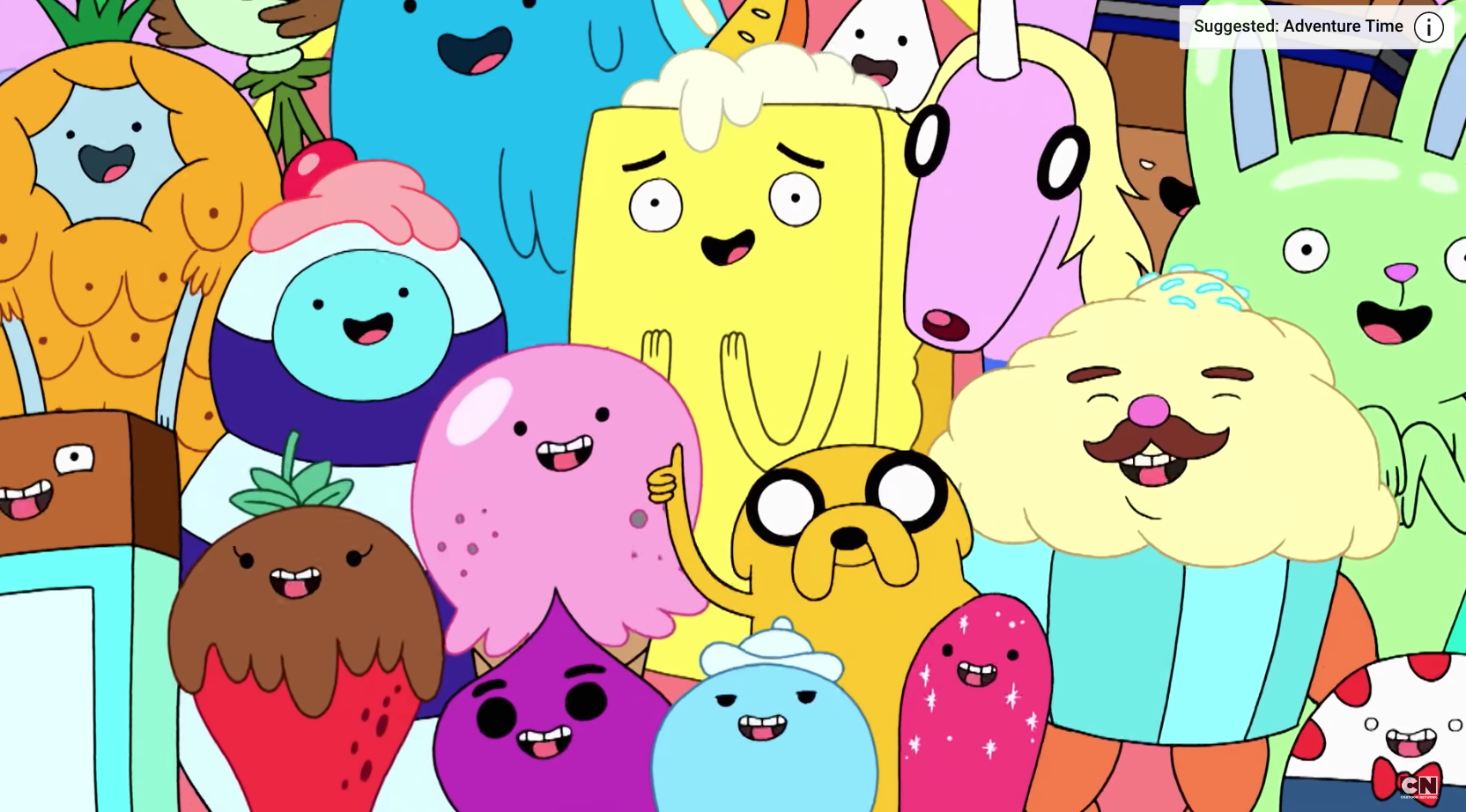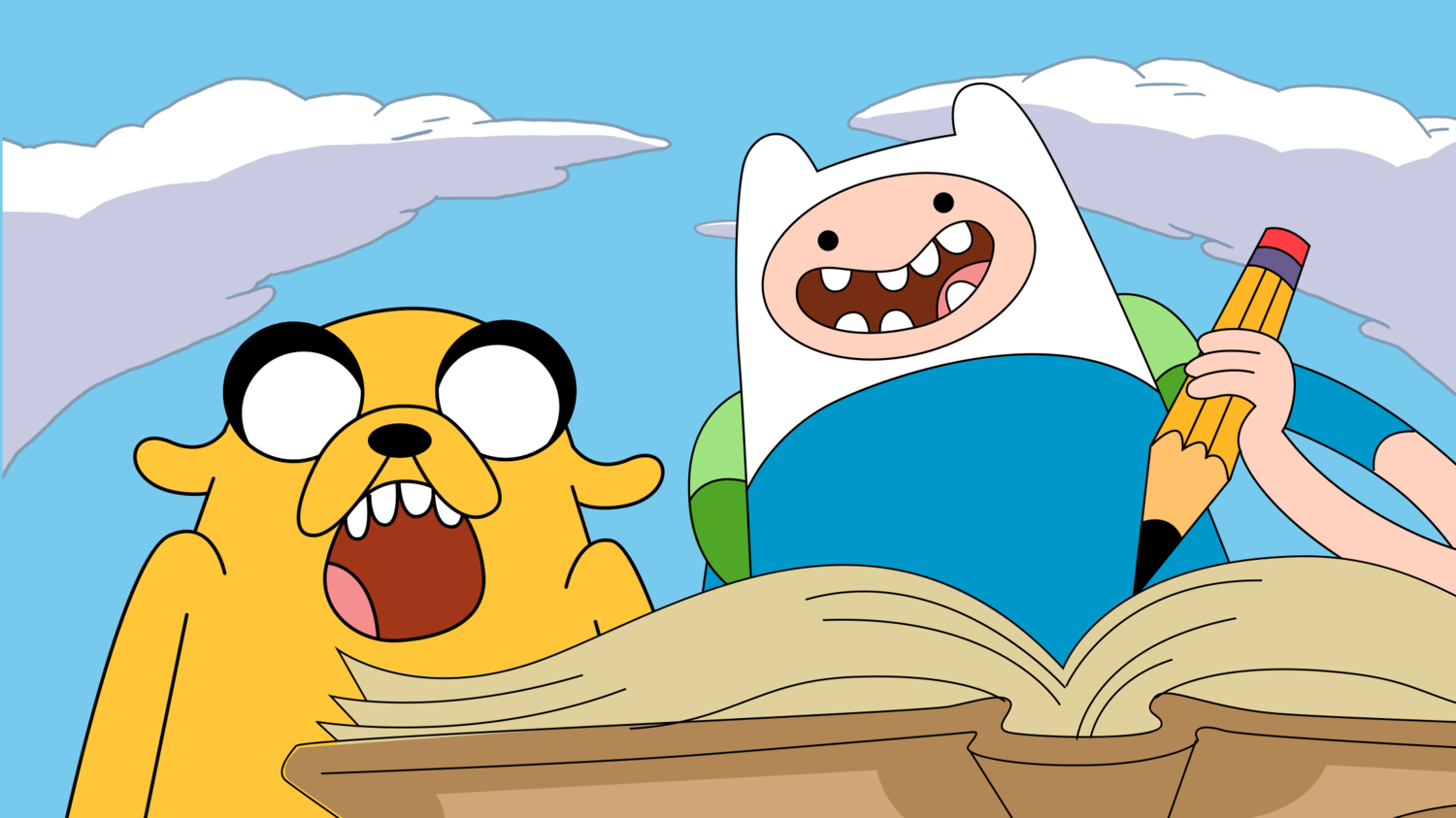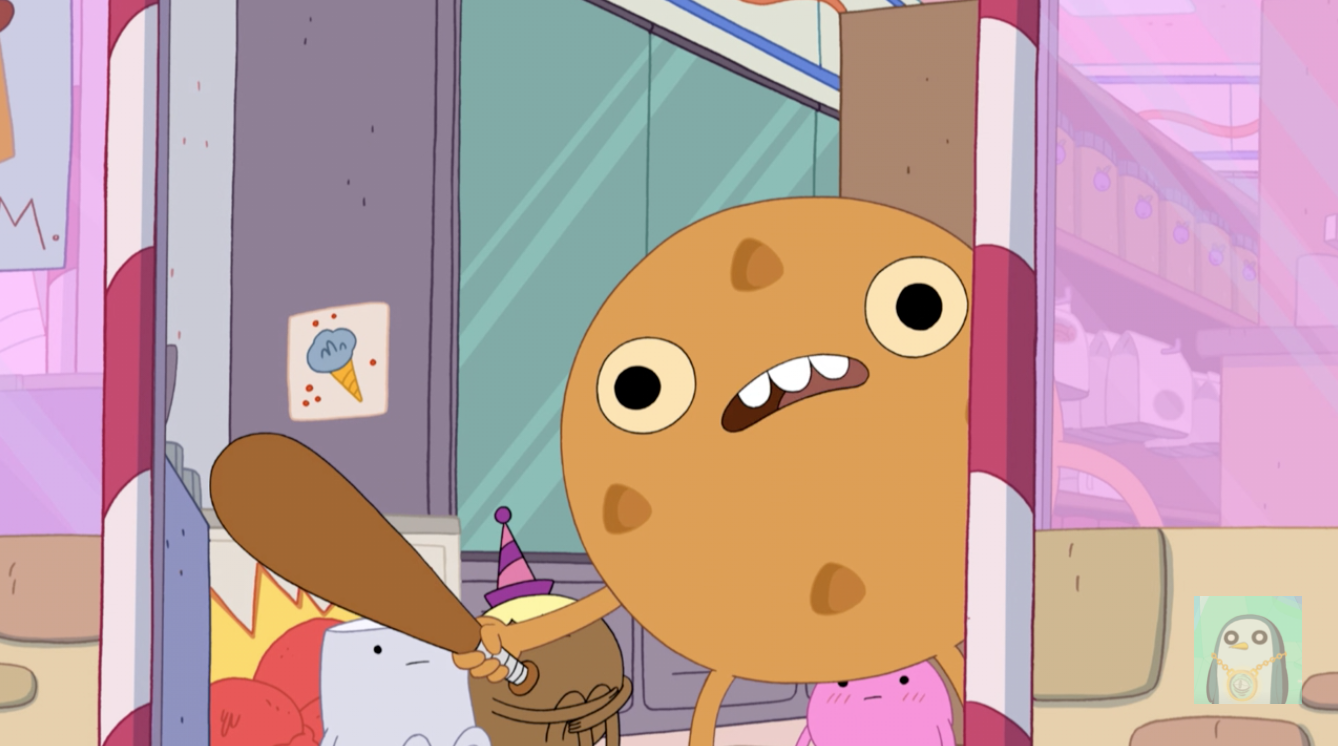
“History suggests Adventure Time should have been a cult classic—the sort of show that ran for thirty episodes and found a second life online with a small, dedicated group of fans,” wrote The New York Times’ Eric Thurm of the animated Cartoon Network series. However, when its final episode was aired late last year, the series was a worldwide smash that took in almost 300 episodes and won eight Emmy awards.
Adventure Time was created by American animator Pendleton Ward, and began life as a short in 2007 created for the Nicktoons talent incubator Random! Cartoons. The show became an online hit, and as such, was commissioned by Cartoon Network as a full-length series that premiered in April 2010 and ran for ten seasons until September 2018.
“It’s the most avant garde thing since the Teletubbies. The look of it is pure art—any frame you pick is gorgeous, it’s inspiring….”
For all its unabashed bonkersness—the incongruity; the rainbows and unicorns and magic flute spells; the simplistically charming character design that makes it perfect stoner fodder—Adventure Time firmly cemented itself as part of the establishment, albeit a part that was resolutely out-there. It became a number of video games, a collectible card series and a number of comic books. According to Thurm’s piece, balloons depicting its central protagonists Finn and Jake are “fixtures of the Macy’s Thanksgiving Day Parade”.
Artists, too, seem to love carving out a little Adventure Time: John Walter is both a vocal and visual fan of the show, often depicting the characters in his maximal artworks (namely Why Not Sneeze Peppermint Butler?); as is Stuart Semple (he of colour-trolling Anish Kapoor fame), who tells me he has Adventure Time slippers and lunch boxes: “It’s the most avant garde thing since the Teletubbies. The look of it is pure art—any frame you pick is gorgeous, it’s inspiring…. Jake and Finn are totally righteous and remind me of when I was a human boy. It’s psychedelic in the best way.” Artist Naomi Banjina and her best friend (also an artist) have “matching-not-matching Adventure Time tattoos”.

But why so much love for these strange creatures? Illustrator and animator Ben McLeavy says that seeing the characters in a static image for the first time—”the rubber-hose limbs, the eyes and (princess) bubblegum colours”—had made him assume “it just was another crappy flash cartoon of the 00s. I was wrong. Once moving, the design of the (hand-drawn) characters made total sense. The faces are minimalist but super expressive. The animation is just so perfect. Jake in particular is probably one of the most inventive characters in animation of recent times.” He adds, “I’m going to go out on a limb here and say that Adventure Time is probably the best looking cartoon ever. Everyone grows, makes mistakes and learns. It’s a pretty fucking positive show.”
Indie video game developer James Lightfoot, who recently released The Mystery of Woolley Mountain, agrees: “It’s imaginative, as if super, fantastically-minded kids were designing and drawing the characters,” he says. “It’s fun and distinct, but explores a host of themes and issues and can sometimes have a sad subtext.”
People discuss the show in lofty terms that belie its Cartoon Network home and kid-focused demographic. The Guardian’s Stuart Heritage compares the show to the work of Austrian director Michael Haneke (Funny Games, The Piano Teacher, Caché); while academic film journal Screen’s writer Carolyn Leslie praised the show’s strength in questioning and challenging gender stereotypes. “As a parent I love how deep it goes into the emotional complexity of its characters and their inner lives,” says designer Mark Forscher, founder of Brooklyn-based creative studio Under After. “It’s heartfelt and ridiculously creative without taking itself too seriously.”

“It’s imaginative, as if super, fantastically-minded kids were designing and drawing the characters”
For all its chipper dialogue, candy colour palettes and effervescence, the show has darker undertones; and many, like Forscher, praise its emotional rigour and depth. Ward told the website Gizmodo that when he first pitched the idea to Cartoon Network, he “didn’t pitch the apocalypse part of it—just the fun part… And then I put the apocalypse in the background. It’s not hit over the head in the show, it’s like cars buried underground in the background. It doesn’t raise any eyebrows.”
So what made teen boy Jake, his bafflingly stretchy dog pal Jake, and their assembled cast of fantastical characters such a hit, while other animated series (like, say, Salad Fingers), happily remain languishing in internet holes of cult fandom? Like Adult Swim series Rick and Morty, Adventure Time is the multigenerational, fantasy-tinged opiate for the comedowning masses. You can sit back, lap up the weirdness and venture into lands where stuff like meatloaf bibs and candy citizens and a multifaceted toast figure that reminds me a little of a Rat King are all fine. Everything, in Adventure Time, is probably going to be fine. Your head might be sore and your face constantly wincing with paranoia at something you did or said last night, but with Finn and Jake, it’s weird but all very much A-Ok. Even when there’s a very angry biscuit threatening you with a baseball bat.





